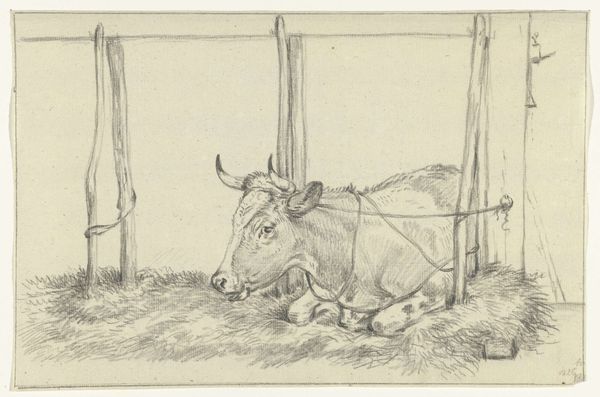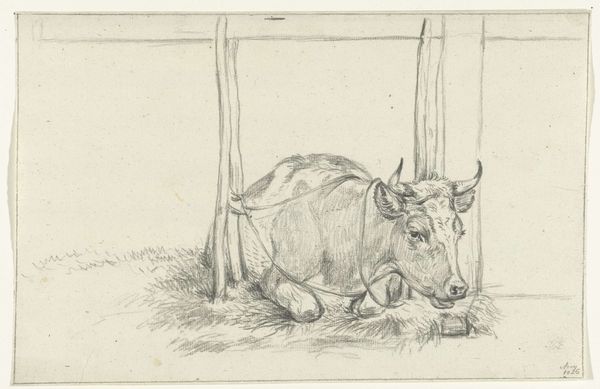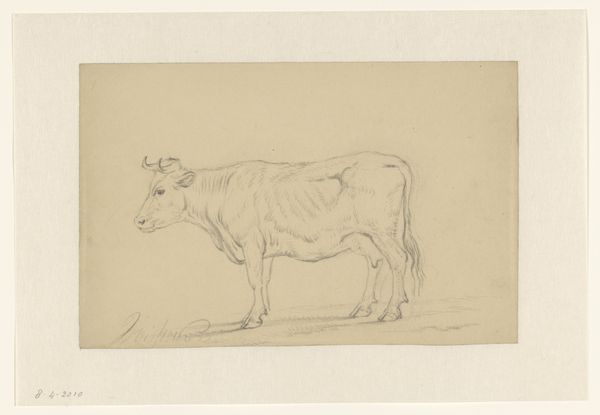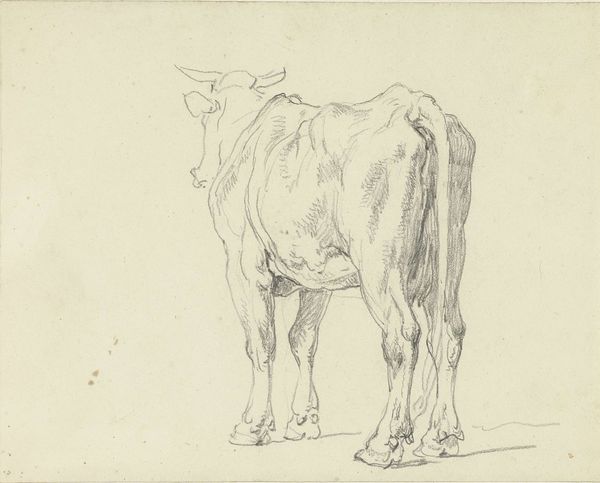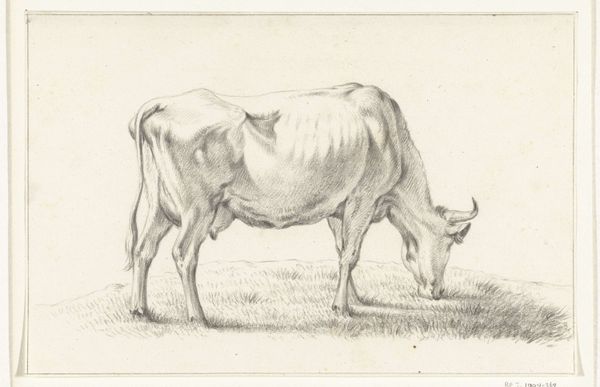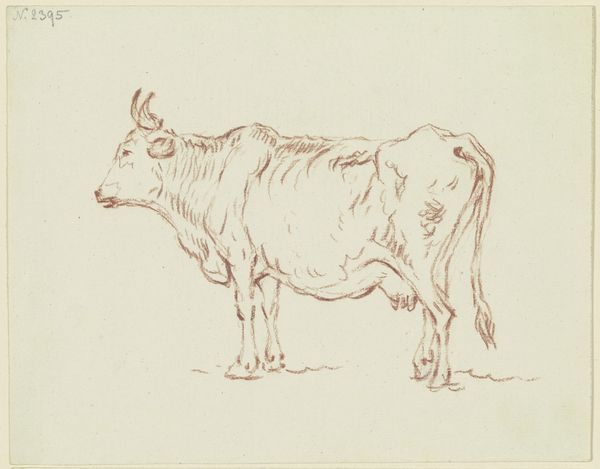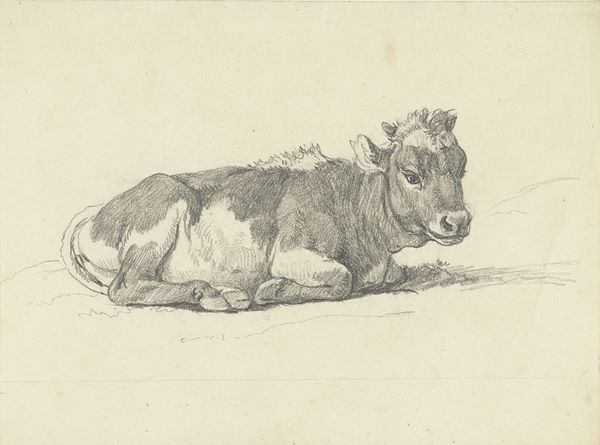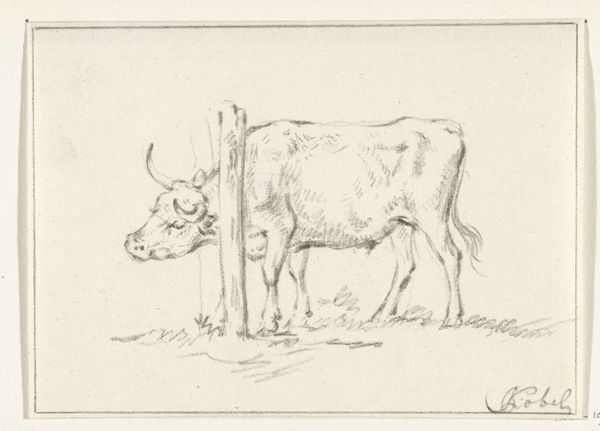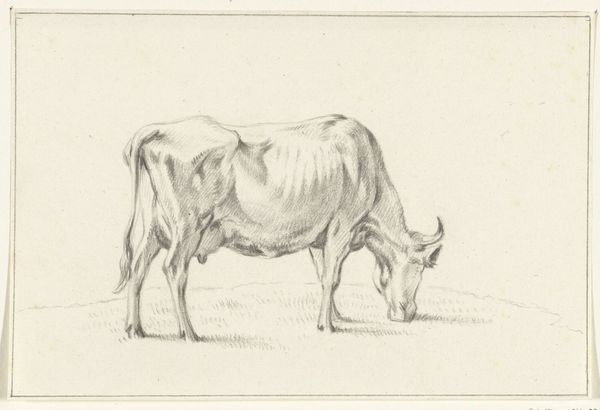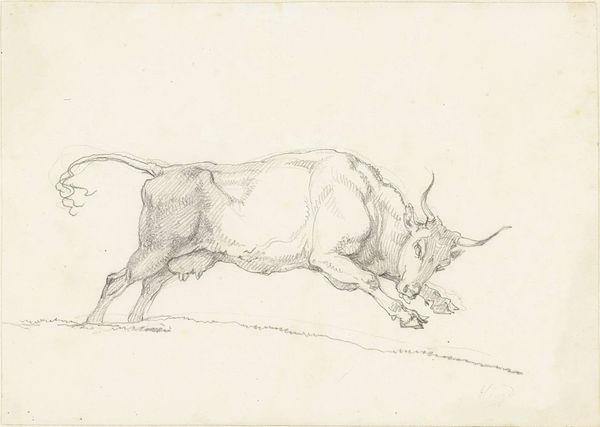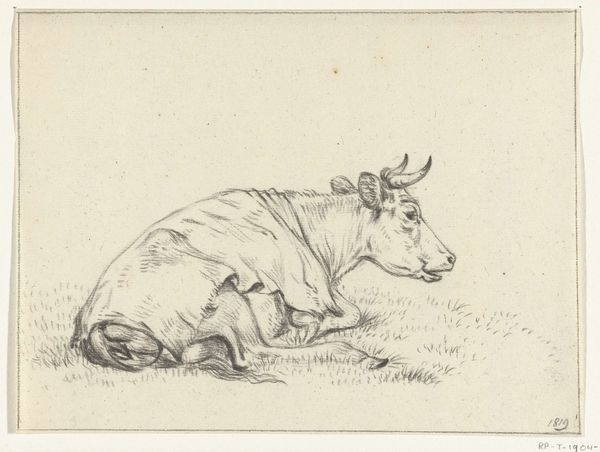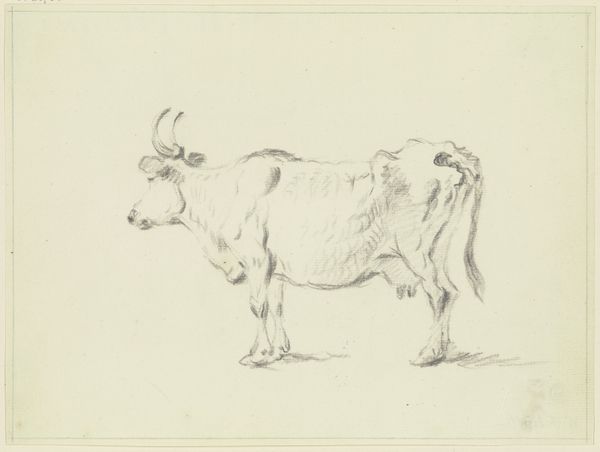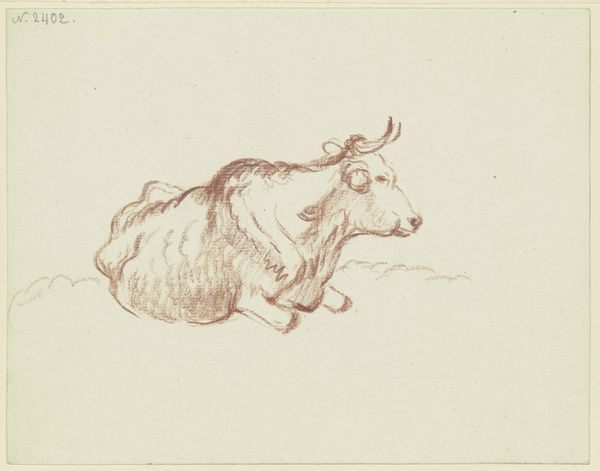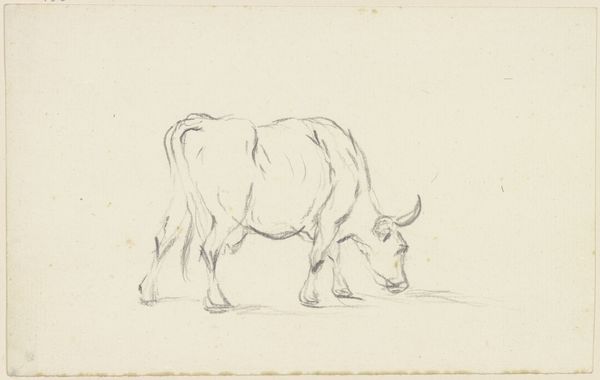
drawing, pencil
#
portrait
#
landscape illustration sketch
#
drawing
#
quirky sketch
#
dutch-golden-age
#
personal sketchbook
#
idea generation sketch
#
sketchwork
#
ink drawing experimentation
#
romanticism
#
pen-ink sketch
#
pencil
#
sketchbook drawing
#
storyboard and sketchbook work
#
realism
#
initial sketch
Dimensions: height 170 mm, width 208 mm
Copyright: Rijks Museum: Open Domain
Curator: Jean Bernard's pencil drawing, “Head of a Cow, Lying in a Stall, Facing Left,” created in 1826, offers a simple, yet intimate glimpse into rural life. Editor: There's a quietude to it, a peaceful resignation almost. The lines are so soft, yet they define the cow's form perfectly within the confines of the stall. You feel the stillness of the animal, perhaps resting after labor. Curator: Yes, the drawing’s effectiveness lies in its realism, which aligned with the Romantic era's inclination toward the beauty of the natural world. We can also look back to the Dutch Golden Age tradition and the prevalence of animal portraits at this time, though Bernard takes a less grand, more immediate approach. The depiction offers insights into how agricultural practices and rural economies are perceived in early 19th-century Netherlands. Editor: Interesting to consider how the stall itself serves as a framing device, a constraint both literal and symbolic. How does this "confinement" affect the interpretation of the drawing? Does it point to human control, or does it highlight the cow's intrinsic dignity, regardless of its circumstances? The headstall also speaks volumes about the relationship of human and animal labor and how it shapes the visual world. Curator: The cultural symbolism is undeniable. Throughout art history, cows are associated with sustenance and agricultural prosperity. Though seemingly simple, Bernard subtly comments on these economic mainstays. And yet, in isolating this one animal, we're also prompted to observe its individual characteristics, an approach reflecting Romanticism's focus on the individual's experience. Editor: It also gives the animal a voice, and perhaps offers the mostly disenfranchised rural classes representation at a moment when industrialization would begin changing their position forever. Curator: And so, this humble pencil drawing not only captures the likeness of a cow but also the complex tapestry of human interaction, artistic convention, and economic systems in early 19th century Europe. Editor: A small picture then with very big stories. An artistic representation holding so much, despite its simple beauty.
Comments
No comments
Be the first to comment and join the conversation on the ultimate creative platform.
